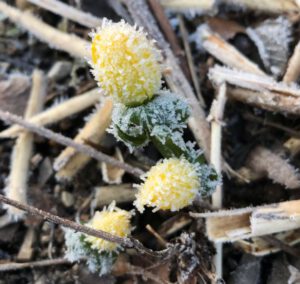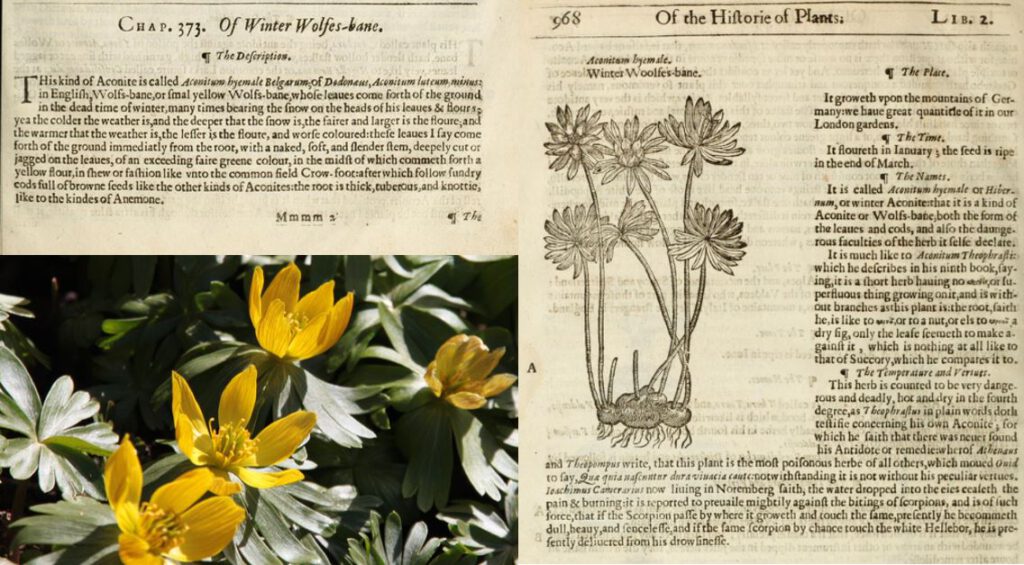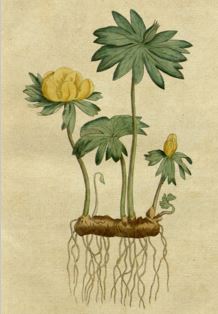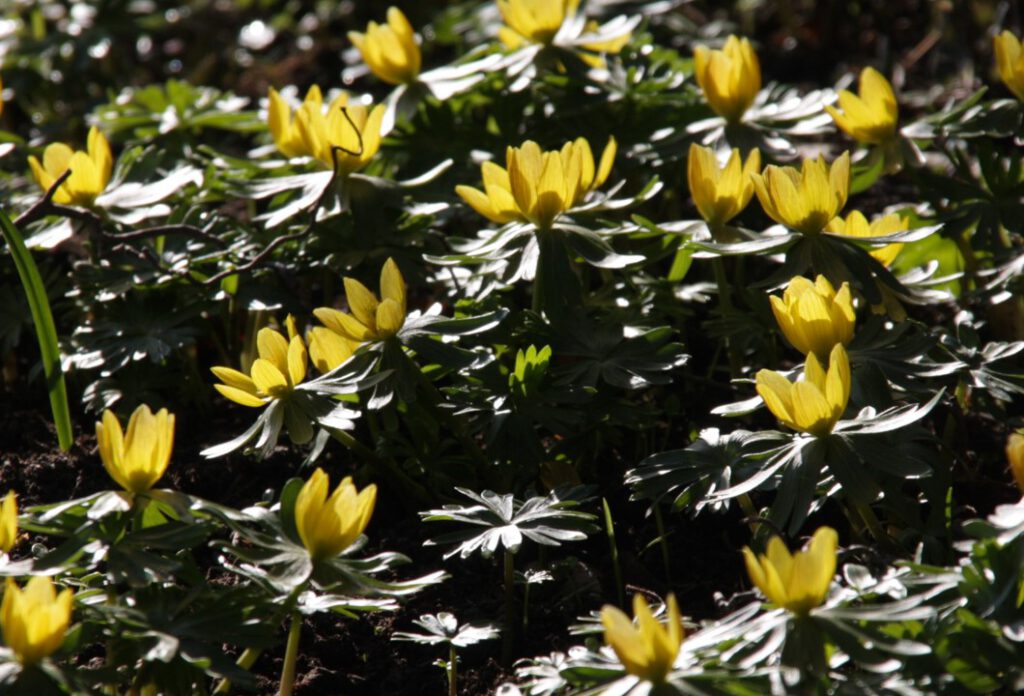 The bright yellow winter aconite provides welcome colour to British gardens early in the year. Winter aconite blooms as early as January, and grows en masse under trees. Did you know that the 18th-century fashion for landscape gardens brought the little plant into fashion?
The bright yellow winter aconite provides welcome colour to British gardens early in the year. Winter aconite blooms as early as January, and grows en masse under trees. Did you know that the 18th-century fashion for landscape gardens brought the little plant into fashion?
Winter aconite is native to South Eastern Europe. It was introduced to Britain in 1596. An early recording can be found in “A Catalogue of Plants Cultivated in the Garden of John Gerard, in the Years 1596–1599“. Gerard also describes the plant as follows: “whole leaves come forth of the ground in the dead time of winter, many times bearing the snow on the heads of his leaves and flowers”. The flower was then also known as Winter Wolfes-bane.

Colour for the new, natural-looking landscape garden

Winter aconite started its career in gardens of botanists. With the rising popularity of sweeping landscape gardens in the 18th century, it became highly fashionable. Lancelot ‘Capability’ Brown, the famous 18th century landscape designer, planted the yellow flower to ensure that there was something interesting to see even early in the year. Country houses setting the fashion for winter aconite included Croome Court in Worcestershire.
Winter aconite’s popularity was probably also helped by the fact that the plants are deer- and rodent-resistant (because all parts of the winter aconite are poisonous when consumed).
From the landscape gardens, the Winter aconite slipped into nature: The plant was first recorded as a flower to be found in the wild in Britain in 1838.
A Scientific approach in 1807 provides the plant with a new Latin name
Historically, winter aconite was identified with the classical aconite, a poisonous herb dedicated to Hecate, a moon goddess in Greek mythology teaching witchcraft and sorcery.
A scientific description was first achieved by botanist Richard Anthony Salisbury. He published his research in 1807 in “Transactions of the Linnean Society of London, Volume 8” (https://archive.org/details/mobot31753002433545/page/300/mode/2up). The plant became known by the new Latin name Eranthis hyemalis (L.) Salisb.

Related articles
Source
- The herball, or, Generall historie of plantes by John Gerard, 1636: https://archive.org/stream/herballorgeneral00gera#page/966/mode/2up
- A Catalogue of Plants Cultivated in the Garden of John Gerard, in the Years 1596–1599: https://www.biodiversitylibrary.org/item/30619#page/26/mode/1up
- Transactions of the Linnean Society, 1807, Volume 8: https://archive.org/details/mobot31753002433545/page/300/mode/2up
- An Historical and Descriptive Account of Croome D’Abitot, the Seat of the Right Honourable The Earl of Coventry by William Dean (gardener); Worcester, 1824
Article by Anna M. Thane, author of the novel
“Von tadellosem Ruf” (http://amzn.to/2TXvrez)

